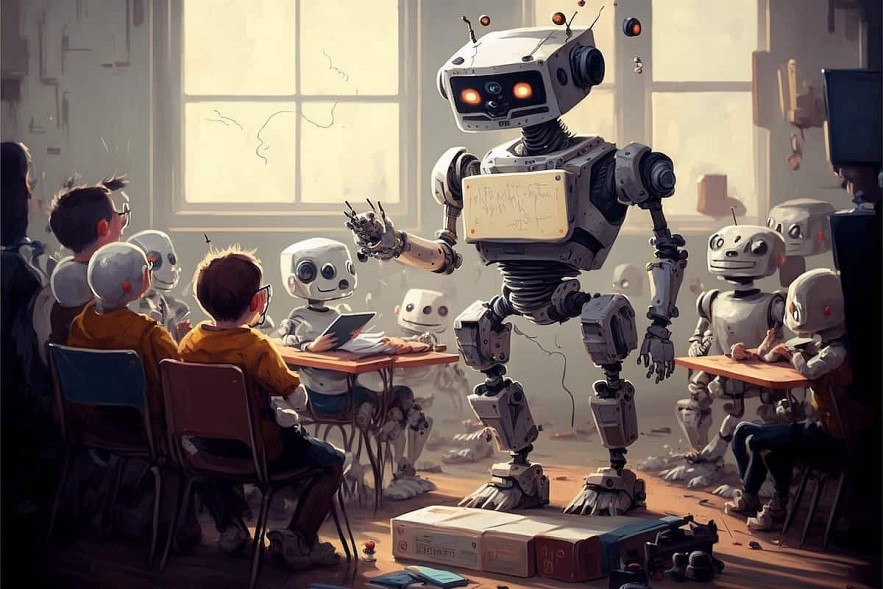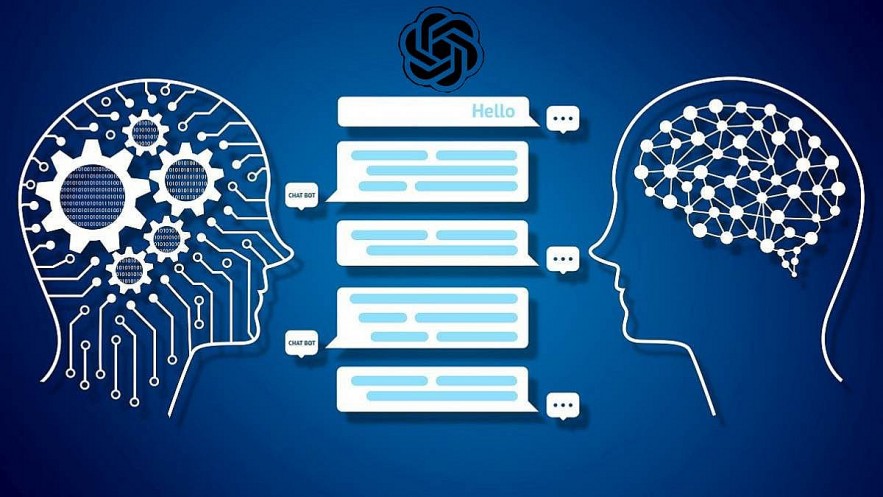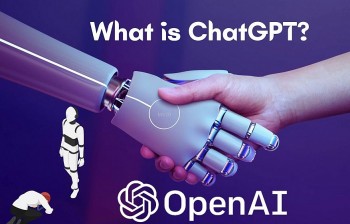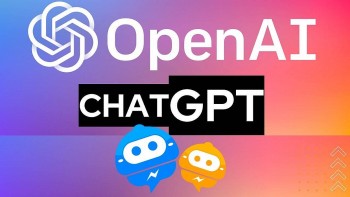Which Language Does ChatGPT Support Best?
♦ ChatGPT: Everything to Know
♦ Who Is Samuel H. Altman - Inventor of AI ChatGPT: Biography, Talent and Net Worth
 |
| Full List of Languages ChatGPT Supports. Photo SEO AI |
| Contents |
ChatGPT has been trained on a wide range of languages, including English, Spanish, German, French, Italian, Chinese, Japanese, and many others. However, the quality and fluency of the model in each language will depend on the amount and quality of training data available for that language.
What Is ChatGPT?
ChatGPT is a large language model chatbot developed by OpenAI based on GPT-3.5. It has a remarkable ability to interact in conversational dialogue form and provide responses that can appear surprisingly human.
| ChatGPT is a large language model (LLM). Large Language Models (LLMs) are trained with massive amounts of data to accurately predict what word comes next in a sentence. |
What Languages is ChatGPT Written in?
Python is the primary language used in the construction of the machine learning model known as ChatGPT. PyTorch, which is also written in Python, is used as the implementation of the deep learning framework for the model.
PyTorch is used throughout the training phase of the model to process and prepare the data. Python libraries such as NumPy and Pandas are utilized during the training process of the model to train the model on the data.
In addition, the implementation of the model incorporates a number of distinct algorithms and methods, such as attention mechanisms, transformer networks, and so on.
READ MORE: What is ChatGPT that Made Google Issue a “Red Alert”
Which Language Does ChatGPT Support Best?
The GPT-3 model, which supports several languages, is the foundation of ChatGPT. Given that OpenAI is constantly updating and strengthening the model, the precise number of languages that ChatGPT supports may change.
It is safe to claim, nonetheless, that it supports a lot of languages. English, Spanish, French, German, Italian, Portuguese, Dutch, Russian, Chinese, Japanese, Korean, and many other languages are among those in which GPT-3 has received training. OpenAI also offers language model APIs for a variety of languages, including GPT-3-CN (Chinese) and GPT-3-JA (Japanese), among others.
What Languages Does ChatGTP Know?
 |
| How many languages does ChatGPT support? Photo analytics dritft |
ChatGPT knows at least 95 natural languages (Feb.2023). See our full list further down. ChatGPT also know a range of programming and code languages such as Python and Javascript.
Full List of ChatGPT Languages
(Last Updaed: Feb.2023)
| Number | Language | Country | Local Translation |
| 1 | Albanian | Albania | Shqip |
| 2 | Arabic | Arab World | العربية |
| 3 | Armenian | Armenia | Հայերեն |
| 4 | Awadhi | India | अवधी |
| 5 | Azerbaijani | Azerbaijan | Azərbaycanca |
| 6 | Bashkir | Russia | Башҡорт |
| 7 | Basque | Spain | Euskara |
| 8 | Belarusian | Belarus | Беларуская |
| 9 | Bengali | Bangladesh | বাংলা |
| 10 | Bhojpuri | India | भोजपुरी |
| 11 | Bosnian | Bosnia and Herzegovina | Bosanski |
| 12 | Brazilian Portuguese | Brazil | português brasileiro |
| 13 | Bulgarian | Bulgaria | български |
| 14 | Cantonese (Yue) | China | 粵語 |
| 15 | Catalan | Spain | Català |
| 16 | Chhattisgarhi | India | छत्तीसगढ़ी |
| 18 | Chinese | China | 中文 |
| 19 | Croatian | Croatia | Hrvatski |
| 20 | Czech | Czech Republic | Čeština |
| 21 | Danish | Denmark | Dansk |
| 22 | Dogri | India | डोगरी |
| 23 | Dutch | Netherlands | Nederlands |
| 24 | English | United Kingdom | English |
| 25 | Estonian | Estonia | Eesti |
| 26 | Faroese | Faroe Islands | Føroyskt |
| 27 | Finnish | Finland | Suomi |
| 28 | French | France | Français |
| 29 | Galician | Spain | Galego |
| 30 | Georgian | Georgia | ქართული |
| 31 | German | Germany | Deutsch |
| 32 | Greek | Greece | Ελληνικά |
| 33 | Gujarati | India | ગુજરાતી |
| 34 | Haryanvi | India | हरियाणवी |
| 35 | Hindi | India | हिंदी |
| 36 | Hungarian | Hungary | Magyar |
| 37 | Indonesian | Indonesia | Bahasa Indonesia |
| 37 | Irish | Ireland | Gaeilge |
| 38 | Italian | Italy | Italiano |
| 39 | Japanese | Japan | 日本語 |
| 40 | Javanese | Indonesia | Basa Jawa |
| 41 | Kannada | India | ಕನ್ನಡ |
| 42 | Kashmiri | India | कश्मीरी |
| 43 | Kazakh | Kazakhstan | Қазақша |
| 44 | Konkani | India | कोंकणी |
| 45 | Korean | South Korea | 한국어 |
| 46 | Kyrgyz | Kyrgyzstan | Кыргызча |
| 47 | Latvian | Latvia | Latviešu |
| 48 | Lithuanian | Lithuania | Lietuvių |
| 49 | Macedonian | North Macedonia | Македонски |
| 50 | Maithili | India | मैथिली |
| 51 | Malay | Malaysia | Bahasa Melayu |
| 52 | Maltese | Malta | Malti |
| 53 | Mandarin | China | 普通话 |
| 54 | Mandarin Chinese | China | 中文 |
| 55 | Marathi | India | मराठी |
| 56 | Marwari | India | मारवाड़ी |
| 57 | Min Nan | China | 閩南語 |
| 58 | Moldovan | Moldova | Moldovenească |
| 59 | Mongolian | Mongolia | Монгол |
| 60 | Montenegrin | Montenegro | Crnogorski |
| 61 | Nepali | Nepal | नेपाली |
| 62 | Norwegian | Norway | Norsk |
| 63 | Oriya | India | ଓଡ଼ିଆ |
| 64 | Pashto | Afghanistan | پښتو |
| 65 | Persian (Farsi) | Iran | فارسی |
| 66 | Polish | Poland | Polski |
| 67 | Portuguese | Portugal | Português |
| 68 | Punjabi | India | ਪੰਜਾਬੀ |
| 69 | Rajasthani | India | राजस्थानी |
| 70 | Romanian | Romania | Română |
| 71 | Russian | Russia | Русский |
| 72 | Sanskrit | India | संस्कृतम् |
| 73 | Santali | India | संताली |
| 74 | Serbian | Serbia | Српски |
| 75 | Sindhi | Pakistan | سنڌي |
| 76 | Sinhala | Sri Lanka | සිංහල |
| 77 | Slovak | Slovakia | Slovenčina |
| 78 | Slovene | Slovenia | Slovenščina |
| 79 | Slovenian | Slovenia | Slovenščina |
| 90 | Ukrainian | Ukraine | Українська |
| 91 | Urdu | Pakistan | اردو |
| 92 | Uzbek | Uzbekistan | Ўзбек |
| 93 | Vietnamese | Vietnam | Việt Nam |
| 94 | Welsh | Wales | Cymraeg |
| 95 | Wu | China | 吴语 |
ChatGPT Can Communicate in Multiple LanguagesThe transformer architecture used in ChatGPT, a neural network language model, has been found to be successful in natural language processing applications. The model learns the patterns and structures of different languages by being exposed to a huge corpus of text data in those languages during training. By learning the grammatical and semantic norms of each language, the model can produce writing that sounds natural in several tongues. The model may be trained to recognize individual languages or dialects and can process a wide variety of inputs, including text, audio, and pictures. Adjusting the model's parameters in this way allows it to take into account the unique features of a given language or dialect. In addition, the model may produce fresh text in the same languages by using what it has learnt from the training data. As a result of its training, the system is able to produce text that follows grammatical and semantic norms and is internally consistent. The model may be tweaked to suit a variety of purposes, such as question answering or language translation. To do this, the model may be trained on data collected for that purpose alone. |
How to Use ChatGPT to Practice English Learning
Using ChatGPT to practice conversation
Do you need endless conversation ideas for small chat, daily interactions, or to ace that job interview? When you can't find a live chat partner, ChatGPT is a fantastic alternative. You may use it to script out hypothetical interactions with the bot for it to learn from, or you can actually have a conversation with it.
READ MORE: ChatGPT - The Teacher's Terror: How To Prevent Fraud
Using ChatGPT to improve your pronunciation
You can also improve your pronunciation skills using ChatGPT.
A great way to do that is to ask it to generate sentences or words that you can practice saying out loud. You can ask for words or sentences where a certain sound is repeated, or with a sequence of two or more sounds (like the sequence SL in the words ‘slow’ and ‘sleep’), or words that contrast in just one sound (like ‘sheep’ and ‘ship’)
Using ChatGPT for learning grammar
There are several ways in which you can improve your grammar using ChatGPT, I’m going to mention three of them. These tips are valuable for teachers looking for new ways to practice grammar with their students, and for self-learners looking for a grammar checker, resources and feedback.
Ask ChatGPT to generate a text using a certain tense or grammar form.
To understand a certain grammar rule, especially if it doesn’t exist in your language, it’s important to see it in context.
ChatGPT can help you with that, by showing you how these tenses or grammatical concepts are used in context.
ChatGPT may be used in place of a Google search to get a written explanation of grammar rules or tense usage. Bear in mind that there is no guarantee that the explanation is entirely accurate. This is why it's best to rely on books, websites, and blogs authored by professionals in the field. While it may not be perfect, it performs a decent job of checking for common errors in fundamental tenses and grammatical rules, which can be a time-saver.
Can ChatGPT replace other language learning methods?No, ChatGPT cannot replace other language learning methods. While it can help to provide a better understanding of certain grammar structures and language expressions, it cannot replace the more traditional methods of language learning |
Vocabulary Building
To help users learn and retain new vocabulary and idioms, this AI may produce lists of words and phrases in the target language.
Vocabulary exercises can also be done. To help users learn and reinforce new words and phrases in a more entertaining way, ChatGPT may be used to build interactive vocabulary games like word matching or fill-in-the-blank activities.
To aid language learners in memorization, ChatGPT may be used to make flashcards containing vocabulary words and phrases in the target language, together with their translations and visuals.
 What is ChatGPT: Q&A, Limitations, Good or Bad What is ChatGPT: Q&A, Limitations, Good or Bad An artificial intelligence (AI) “chatbot” that can text you, answer questions, even write a thesis and write code is taking the world by storm. That ... |
 ChatGPT: Good or Bad for Education? ChatGPT: Good or Bad for Education? Some educators warn about the possibility that AI systems like ChatGPT chatbots will completely change the academic world in both positive and negative directions. In ... |
 What Can ChatGPT Do to Cause A Global Storm? What Can ChatGPT Do to Cause A Global Storm? ChatGPT has been a sensation since its introduction in November 2022, prompting widespread interest and scrutiny. |
























